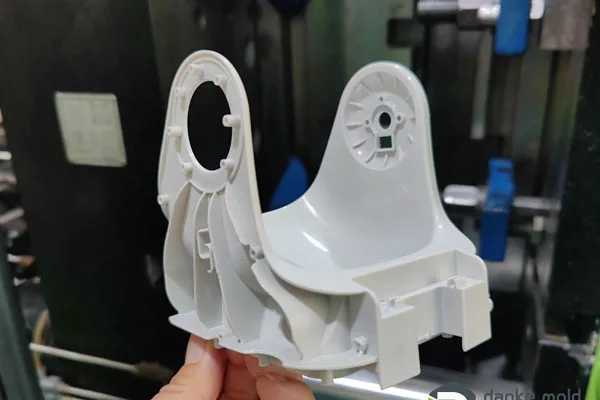Have you ever wondered how those smartphones, kitchen appliances, and automotive parts appear in endless supply with consistent quality? Welcome to the fascinating world of high-volume manufacturing—where creating thousands or even millions of identical products is both an art and a science. In today’s hyper-competitive global marketplace, mastering high-volume manufacturing gives businesses a significant edge through economies of scale. Let’s explore how the most successful manufacturers maximize throughput while ensuring every product meets exacting standards.
Robot Revolution: Automation as the Heartbeat of Scale
Modern high-volume manufacturing facilities might make you feel like you’ve entered the future. Robotic arms dance in precise, programmed movements, conveyor systems transport components with rhythmic efficiency, and automated inspection equipment examines products with an unwavering electronic eye. These technologies form the backbone of today’s high-volume manufacturing powerhouses, slashing labor costs while delivering consistency that human workers simply cannot match.
The most sophisticated high-volume manufacturing operations take automation to another level by integrating these systems through comprehensive manufacturing execution systems (MES)—think of them the digital conductors orchestrating a complex industrial symphony. These platforms coordinate every aspect of high-volume manufacturing, from raw material delivery to final packaging, creating a seamless flow that transforms raw materials into finished products with minimal human intervention. This integration clearly distinguishes accurate high-volume manufacturing excellence and more basic production approaches.
Production Lines: Where Every Second and Inch Matters
The physical layout of a high-volume manufacturing facility might seem simple at first glance, but don’t be fooled—it’s often the result of thousands of hours of painstaking optimization. Successful high-volume manufacturing operations implement principles like linear flow (no backtracking or crisscrossing paths), minimized travel distances (why walk 50 feet when five will do?), and perfectly balanced workstations (no one operation holding up the entire line). Each element in a high-volume manufacturing line must perfectly harmonize with others—like synchronized swimmers, where one out-of-step performer disrupts the whole routine.
Rapid changeover capability is one of the most impressive feats in high-volume manufacturing. While traditional manufacturing might shrug at several hours of downtime to switch from making Product A to Product B, optimized high-volume manufacturing operations implement SMED (Single-Minute Exchange of Die) principles to transform hours into minutes or even seconds. This quick-change artistry gives high-volume manufacturing operations remarkable flexibility to produce multiple product variations while maintaining the high-speed output that makes these operations economically advantageous.
Materials in Motion: Feeding the Manufacturing Beast
The logistics of keeping a high volume of manufacturing operations supplied would make even the most organized person’s head spin. The sheer quantity of materials flowing through these facilities demands sophisticated inventory and delivery systems that ensure production never stops due to a lack of components while avoiding costly excess inventory. Just-in-time delivery systems, kanban replenishment signals, and vendor-managed inventory programs create the lifeblood of successful high-volume manufacturing operations.
Supply chain management takes on strategic importance in high-volume manufacturing environments. The massive material volumes often lead to specialized supplier relationships beyond simple purchasing arrangements. Strategic partnerships, dedicated capacity agreements, and quality certification programs help ensure reliable material flow into high-volume manufacturing operations. These relationships involve extensive coordination to support the demanding requirements where a few hours’ delay can mean thousands of missed production units.

Plastic products
Quality at Speed: The Ultimate Manufacturing Challenge
Maintaining consistent quality when producing hundreds or thousands of units per hour presents unique challenges in high-volume manufacturing environments. Rather than relying on traditional inspection methods (which would create massive bottlenecks), successful high-volume manufacturing operations implement statistical process control (SPC) methodologies. These systems monitor critical parameters in real time, allowing production teams to detect and address subtle process drift before it results in defective products—catching problems before they happen rather than after.
Technology plays a starring role in high-volume manufacturing quality assurance. Vision systems that can spot microscopic defects in milliseconds, laser measurement devices that verify dimensions with superhuman precision, and multi-sensor technologies perform lightning-fast quality checks throughout production. These automated quality systems maintain stringent standards without slowing the breakneck pace of high-volume manufacturing, ensuring speed and excellence.
The Economics of Scale: Maximizing Every Dollar
The financial magic of high-volume manufacturing comes from spreading fixed costs (equipment, facilities, engineering) across massive production quantities, driving down the per-unit cost to levels that smaller-scale operations simply cannot match. However, achieving this potential requires relentless cost discipline across every aspect of the operation. Successful high volume manufacturing facilities continuously analyze material usage (can we reduce scrap by another 0.5%?), labor efficiency (can this operation be further automated?), energy consumption (can we recover heat from this process?), and equipment utilization (can we squeeze another 2% uptime from this machine?).
Continuous improvement methodologies provide the roadmap for optimizing high-volume manufacturing operations. Lean manufacturing principles help teams identify and eliminate non-value-adding activities, while Six Sigma tools drive out variation to enhance quality and efficiency. The beauty of these approaches in high-volume manufacturing environments is that even tiny improvements multiply across massive production volumes—a 1% efficiency gain might save thousands or even millions of dollars annually when applied to genuinely high-volume production.
Transform Your Production Challenges into Competitive Advantages
At Danke Mold, we bring decades of high-volume manufacturing expertise to help you scale production while maintaining exceptional quality and controlling costs. Our team doesn’t just understand the theory—we’ve implemented successful high-volume manufacturing solutions across diverse industries and global markets.
Our engineering approach to high-volume manufacturing optimizes every aspect of your production system—from initial layout and automation strategy to material flow and quality systems. We specialize in creating manufacturing solutions that scale efficiently while maintaining the flexibility to adapt to changing market demands.
Ready to transform your production capabilities? Contact Danke Mold today and discover how our high-volume manufacturing expertise can help you achieve economies of scale while delivering the consistent quality your customers demand.
